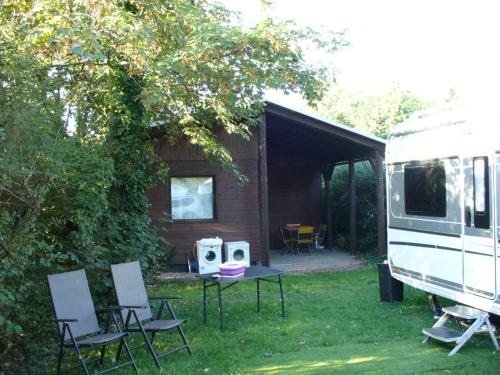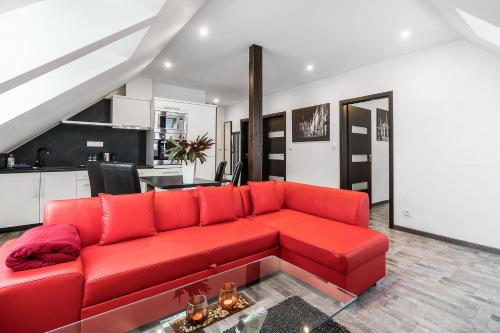Could you say that this church was built with a skeleton crew? Probably… but that would be tasteless, so I wouldn’t do that.
Regardless, there were some people who certainly put their back into it.
I’m at the Sedlec Ossuary – also known as the Kutná Hora Bone Church – one of the strangest places in the Czech Republic. It’s gruesome, yet beautiful; morbid, but somehow romantic.
It’s a testament to the creativity of humans… and creativity with humans.
What is the Sedlec Ossuary?
The Sedlec Ossuary is part of the cemetery church of an old monastery in the city of Kutná Hora in the Czech Republic that is decorated with the bones of people who were once buried in the ground here. It’s become one of the most popular tourist attractions in the Czech Republic, partly because it’s easily accessible from Prague.
Why was the Sedlec Ossuary built?
The Cemetery Church of All Saints (the name for the whole building here) was built in the 14th century after tens of thousands of people were buried in the cemetery here. As part of the design, the lower level of the church was to be used as the ossuary, which means a place where human bones are interred.
The decorations of bones came later, with the first ones around the end of the 15th century according to legend, by a half-blind monk. These decorations were extended in 1870 to include things like the coat of arms.
Are the bones in the Sedlec Ossuary real?
Yes, the bones in the Sedlec Ossuary are indeed real. They come from bodies that were buried in the cemetery around the church in the 14th and 15th century and then moved into the ossuary after they were dug up as the cemetery’s size was reduced.
While there are lots of beautiful things to see in the Czech Republic, visiting the Sedlec Ossuary is likely to be the creepiest place you go. But don’t be scared, the Kutná Hora Bone Church actually has a really interesting story behind it.
The Sedlec Ossuary is in the city of Kutná Hora. You may recall that I’ve already written about the city and the two main churches that make up the main part of a World Heritage Site.
If you’re planning a visit, you can read some of those tips on things to do in Kutná Hora.
Those two World Heritage churches are large monumental buildings that exhibit the lavishness of religion as you would expect. This is different.
The Sedlec Ossuary can get really busy, so I would recommend buying a skip-the-line ticket in advance.
If you’re coming from Prague and don’t want the hassle of dealing with public transport, I would recommend this excellent tour to Kutná Hora that will show you the Sedlec Ossuary, as well as the other sights.
The Sedlec Ossuary is just a few minutes walk from the Cathedral of Our Lady at Sedlec, the bright and warm church filled with art. But you’ll find something completely contrasting here.
As you go through the front door, you may feel your spine tingle slightly.
Inside the Sedlec Ossuary
Inside, bones hang on the walls. Bones hang from the ceiling.
An enormous chandelier is made from bones, pieces of art have been created out of bones, display cases hold rows of… you guessed it… bones.
The chapel is quite small. You don’t need to move much to see it all, except to take a closer look at some of the details. And you should do that – the details are as shocking as the large art installations that hang above you and are on display in the nooks and crannies.
When you’re standing in the middle, turn in any direction and some grisly arrangement of femurs and tibias will be right in front of you.
That is because inside the ossuary are the bones of more than 40,000 people!
Perhaps the most confronting bone of all, as is often the case, is the skull. It’s when those eyeless sockets seem to stare at you that you really feel like you are surrounded by the dead.
Many people feel the pyramids of skulls are one of the most striking things inside the Sedlec Ossuary, but for me it’s the coat of arms made with different parts of the bodies, from small fingers to large leg bones, that is particularly unsettling because it’s so intricate.
History of Sedlec Ossuary
The story of the Sedlec Ossuary really starts in 1278 when an abbott came back from Jerusalem with a jar of ‘holy soil’. He scattered it on this spot and soon it became a favourite spot to bury bodies.
Over the next century, two big things happened – the Hussite Wars and the Black Death. Thousands upon thousands of people died and the burial ground here became full because the holy soil had made it so popular.
When the new Cemetery Church of All Saints was built on the site around 1400, some of the bodies were dug up and their bones were put into the ossuary beneath the church for storage.
About a hundred years later, it was decided that the rest of the bodies in the cemetery would be dug up and their bones also stored here.
Who arranged the bones in the Sedlec Ossuary, though?
Well, the first bones are said to have been arranged by a half-blind monk who is credited for putting some of the skulls and bones into the pyramid shapes. (Legend says that he got his sight back after he did it.)
But most of what you see today is from 1870 when someone decided the rest of the bones should be arranged in more artistic ways, rather than just stored.
I haven’t been able to find any conclusive reason why anyone thought this would be a good idea, but the job was given to a woodcarver called František Rint. It is his work that we still admire, almost 150 years later.
It’s worth noting that this is actually not the first time I have seen something like this. In Serbia, I visited a place called Skull Tower in the city of Niš, where skulls had been placed into the walls of the tower.
Interestingly, though, these two structures served very different purposes.
The tower in Serbia was built in 1809 as a threat, to display the remains of enemies who had dared cross the Ottoman Empire. Here in Kutná Hora, the bones are displayed to honour the dead (however creepy it may seem).
I do wonder if it’s actually an honour.
Skulls are stacked onto conical shelves, staring out with hollow eyes in panorama. Legs and arms are used to make a coat of arms… heralding what?
The people to whom these bones belong were never given the choice of whether they wanted to be used for art, displayed in such a way that tourists would come and take photos (and write about it on their blog).
But, then again, many of them did choose this location because it was deemed to be holy, blessed, and special. Is that not what this place still is, in some modern way?
Certainly, the remains of these medieval citizens have not just been lost and forgotten under the ground.
Who knows? Maybe they would be happy. Or maybe… maybe they would have a bone to pick with someone.
(Sorry, I couldn’t help one last humerus line.)
Visiting the Sedlec Ossuary
It’s quite easy to visit the Sedlec Ossuary – although avoiding the crowds can be the hardest thing. If you’re really keen to see it without all the people, you need to come right when it opens. I did that and I had the whole place to myself at first.
But I know many people will come to see the Kutná Hora Bone Church as a day trip from Prague. The simplest thing is to join a tour which will include the other (very impressive) sights in Kutná Hora.
I think the best option is this tour from Prague, but there are a few other options here to consider:
If you’re keen to visit the Sedlec Ossuary independently, I’ve got some useful info to help you plan.
Where is the Sedlec Ossuary?
The Sedlec Ossuary is in the northeastern part of Kutná Hora, near the main train station, about two kilometres from the centre of town. The official address of the Sedlec Ossuary is Zámecká, 284 03 Kutná Hora. You can see it on a map here.
How do you get to the Sedlec Ossuary?
With public transport, the best way to get to Kutná Hora from Prague is by train. There’s a direct train to the main station that takes about 50 minutes and the ossuary is near there. You can check the timetable here.
To get to the Sedlec Ossuary from the historic centre of Kutná Hora, it’s either a 30-minute walk, or you can catch the local train from the Kutná Hora město station to the Kutná Hora-Sedlec station.
When is the Sedlec Ossuary open?
The Sedlec Ossuary is open from November to February from 09:00 – 16:00.
In March and October, it is open from 09:00 – 17:00.
From April to September it is open from 09:00 – 18:00.
How much does it cost to visit the Sedlec Ossuary?
An entry ticket for the Sedlec Ossuary also includes access to the Cathedral of Our Lady at Sedlec. The price for an adult is 220 CZK (US$9.55), for a concession it is 150 CZK (US$6.50), and 80 CZK (US$3.50) for children.
During busy periods, it’s worth buying this skip-the-line ticket in advance!
If you’re doing the main sights in Kutná Hora, I would suggest buying the combined ticket that also includes the Church of St Barbara. That costs 360 CZK (US$15.65) for adults, 270 CZK (US$11.70) for concessions, and 80 CZK (US$3.50) for children.
Are there tours to Kutná Hora?
Yes, there are lots of tours to Kutná Hora that include the Sedlec Ossuary and they are a great way to make the most of a day trip from Prague. While it’s easy enough to get there and see everything independently, it does take longer to do it yourself and involves a bit more work.
I would recommend this excellent day trip from Prague. Or you may prefer to go on this private tour if you’re in a group.
More information
For more information, you can visit the ossuary’s official website.
There is also some lovely accommodation in Kutná Hora, and staying overnight means you can spend time exploring the other things to do in Kutná Hora. To help your planning, I’ve put together some tips on where to stay.
THE BEST ACCOMMODATION IN KUTNA HORA
Although you can visit Kutná Hora as a day trip from Prague, it’s worth staying overnight to explore the city once the crowds leave.
BACKPACKER

If you’re looking for a backpacker option, there is a good chalet at the Autokemp Santa Barbara campsite.
BUDGET
For something affordable but comfortable, Pension Bed&Breakfast is probably the best place.
APARTMENT

For a nice modern apartment, you should definitely try Penzion Apartments Benešova 6.
LUXURY
And if you want to splurge, you can stay in a castle filled with modern art at Chateau Třebešice!
nice post
Does anyone got sick after visiting this church?